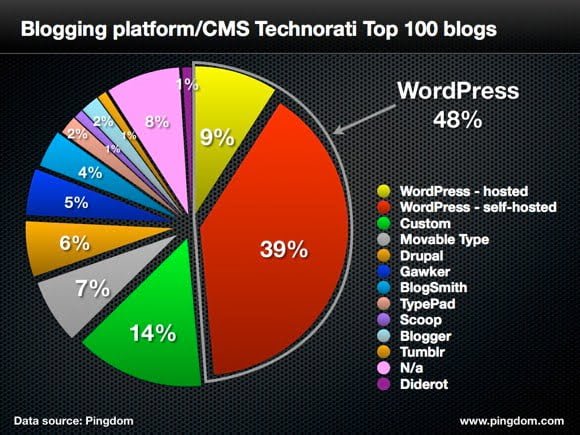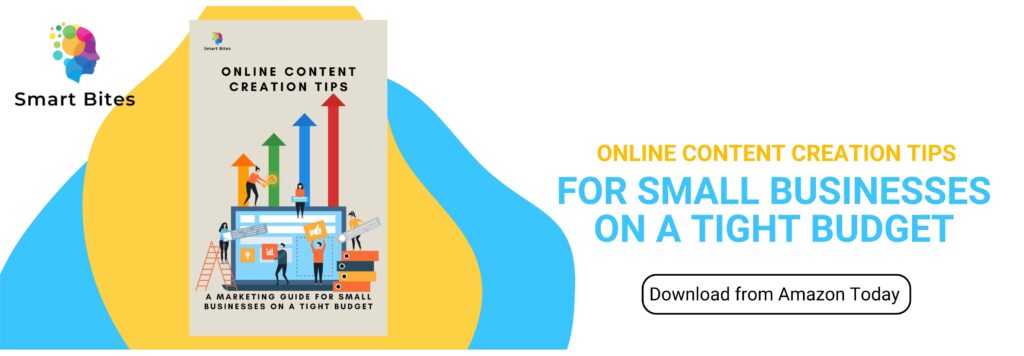
How to Start a Blog: A Complete Step-by-Step Guide
In today’s highly connected world, blogging has become an essential tool for individuals and businesses alike to share their thoughts, ideas, and expertise. If you’re a complete beginner, here are our top pointers on how to start a blog from scratch.
With the proliferation of social media and the growing demand for quality content, blogging offers a unique opportunity for people to establish their online presence, build a loyal following, and even generate income.

Starting a blog can provide numerous amazing benefits, including:
- Personal growth: Blogging encourages critical thinking, creativity, and effective communication. It can be a fulfilling hobby that allows you to express yourself and explore new interests.
- Building an online presence: A well-maintained blog can showcase your skills, knowledge, and personality, which can lead to new opportunities and connections.
- Networking: Blogging allows you to connect with like-minded individuals, industry experts, and potential collaborators, expanding your professional network.
- Earning potential: Through various monetization methods, blogging could become a source of passive income or even a full-time career.
- Authority and influence: A successful blog can establish you as an expert in your niche, giving you credibility and influence in your field.
This comprehensive, step-by-step guide aims to help you navigate the process of starting a blog, from choosing the right platform and selecting a domain name to creating engaging content and promoting your blog effectively.
By following these steps, you will be well on your way to creating a successful blog that reflects your passion and expertise.
Choosing a Blogging Platform
Before you start a blog, it’s crucial to select the right platform that suits your needs and goals. Here are some factors to consider when choosing one:
- Ease of use: The blogging platform should be user-friendly and not require extensive technical knowledge to set up and maintain.
- Customization options: The platform should offer a variety of themes and plugins to help control your blog’s appearance and functionality.
- Community support: A large and active community of users can be beneficial for troubleshooting issues, finding tutorials, and getting inspiration.
There are many blogging platforms available, each with its pros and cons. Here is an overview of some popular options:
- WordPress: WordPress is the most widely used blogging platform, powering over 40% of all websites. It offers an extensive range of customization options through themes and plugins and has a large, active community. WordPress comes in two versions: WordPress.com (a hosted solution) and WordPress.org (self-hosted).
- Blogger: Owned by Google, Blogger is a free and straightforward platform that offers basic customization options. It’s an excellent choice for personal blogs and hobby bloggers who don’t require advanced features.
- Medium: Medium is a content-centric platform that focuses on providing a clutter-free reading experience. It has a built-in audience and offers limited customization, making it suitable for writers who want to focus on their content without worrying about design and technical aspects.
- Wix: Wix is a website builder that allows you to create a blog using a simple drag-and-drop interface. It offers a wide range of templates and customization options but may not be the best choice for bloggers who need more advanced features.
- Squarespace: Squarespace is an all-in-one website builder known for its sleek and professional templates. It offers a user-friendly interface and extensive customization options but comes with a higher price tag than some other platforms.
For beginners, WordPress is often the recommended choice due to its flexibility, customization options, and extensive community support. However, it’s essential to assess your needs and goals when choosing a platform, as the best choice will vary depending on your specific requirements.


Selecting a Domain Name
Your domain name serves as your blog’s address on the internet, making it an essential aspect of your online presence. A great name can help establish your brand, make your blog more memorable, and convey professionalism.
To select the perfect domain name for your blog, consider the following things:
- Keep it short and memorable: Aim for a domain name that is easy to remember, spell, and pronounce. Shorter domain names are typically more memorable and less prone to typos.
- Use a relevant keyword: Including a keyword related to your niche can help users understand your blog’s focus and improve search engine rankings. However, avoid keyword stuffing or using generic terms that don’t represent your brand.
- Avoid numbers and hyphens: Domain names with numbers and hyphens can be confusing and difficult to remember. Stick to letters whenever possible for a cleaner, more professional look.
Once you’ve chosen the perfect domain name, you’ll need to register it through a domain registrar. Here’s how to proceed:
- Domain registrars: Numerous domain registrars are available, including popular options like GoDaddy, Namecheap, and Google Domains. Compare their prices, features, and customer support before choosing one.
- Pricing and registration process: Domain registration typically costs between $10 and $20 per year, depending on the registrar and domain extension (e.g., .com, .net, .org). Some web hosting services also offer free domain registration as part of their hosting plans.
- To register your domain, follow the registrar’s step-by-step process, which usually involves checking the domain’s availability, choosing a registration period, and providing your contact information.
Choosing a Web Hosting Service
Web hosting plays a crucial role in the performance, security, and reliability of your blog. A good web host ensures that your pages are accessible to users around the clock and load quickly, providing a better user experience and improving your search engine rankings.




When you first start a blog, choosing free hosting is an option but once you gain confidence and want to reach a wider audience, switching to paid hosting is the best option.
To select the best web hosting service for your blog, consider the following factors:
- Speed and uptime: Look for a web host that guarantees fast loading times and high uptime (at least 99.9%) to ensure your blog is always accessible and performs well.
- Pricing: Compare the pricing plans and features offered by different web hosts. While cheaper plans may be tempting, they may not provide the best performance or support. Consider your budget and the value you’ll receive from the hosting service.
- Customer support: Reliable and responsive customer support is essential, as you may need assistance with technical issues or have questions about your hosting plan. Look for web hosts with 24/7 support via chat, email, or phone.
- Scalability: As your blog grows, you may need to upgrade your hosting plan to accommodate increased traffic and resource requirements. Choose a web host that offers a range of plans and an easy upgrade process.
For beginners, shared hosting plans from reputable providers like Hostinger are often recommended due to their affordability, ease of use, and sufficient resources for small to medium-sized blogs. As your blog grows, you may need to consider upgrading to a more advanced hosting plan or switching to a different provider that better suits your needs.


Setting Up Your Blog
Once you’ve chosen a platform and web host, it’s time to set up your blog. The installation process will vary depending on who you have chosen but these are the most common methods:
- One-click installations: Many web hosts offer one-click installations for popular blogging platforms like WordPress, making it easy to set up your blog with minimal technical knowledge. Look for an auto-installer like Softaculous or Fantastico in your hosting control panel.
- Manual installations: If one-click installations aren’t available, you’ll need to manually install the blogging platform. This process typically involves downloading the platform’s files, uploading them to your web host, creating a database, and configuring the settings. Follow the installation instructions provided by your chosen platform.
After installing your blogging platform, configure the basic settings to personalize your blog:
- Site title and tagline: Set a descriptive and catchy title and tagline for your blog, which will be displayed in search engine results and browser tabs.
- Timezone and language: Configure your blog’s timezone and language settings to ensure accurate timestamps and proper localization.
- Permalink structure: Set a user-friendly permalink structure that includes relevant keywords and is easy to understand. For WordPress users, the “Post name” option is often recommended.
When you start a blog, the theme determines its overall appearance and layout. Consider these factors when selecting a theme:
- Free vs. premium themes: While free themes can be a cost-effective option, premium themes often offer more advanced features, customization options, and dedicated support.
- Responsive design: Choose a theme with a responsive design that adapts to different screen sizes, ensuring your blog looks great on desktops, tablets, and smartphones.
- Customization options: Look for themes with a variety of customization options, such as colour schemes, font choices, and layout settings, allowing you to personalize your blog to match your brand.
Plugins extend the functionality of your WordPress site. Here are some essential plugins to consider installing when you start a blog:
- SEO plugins: Plugins like Yoast SEO or All in One SEO Pack help optimize your blog’s content for search engines, improving its visibility and rankings.
- Security plugins: Security plugins like Wordfence or Sucuri enhance your blog’s protection against threats like hacking and malware.
- Backup plugins: Regularly backing up your blog is crucial to prevent data loss. Plugins like UpdraftPlus or BackWPup make it easy to schedule automatic backups.
- Social sharing plugins: Encourage your readers to share your content by adding social sharing buttons with plugins like AddToAny or Social Pug.
When choosing plugins, keep in mind that some can have an impact on the functionality of your site, for example, slowing the download of pages and affecting the usability. It’s always best to consider if you actually need a particular plug-in before you press the activate button.
Creating Quality Content
To create content that resonates with your readers, it’s essential to define your niche and target audience when you start a blog. Don’t simply post for the sake of it:
- Niche: Your niche is the specific topic or industry your blog focuses on. Consider your passions, expertise, and market demand when choosing a niche.
- Target audience: Your target audience is the group of people most likely to be interested in your content. Identify their demographics, interests, and pain points to create content that appeals to them.
Explore various content formats to keep your blog engaging and dynamic. Some popular types of content include:
- How-to guides and tutorials
- Listicles
- Opinion pieces and personal stories
- Interviews and expert roundups
- Reviews and comparisons
- Infographics and visual content
When you start a blog, make sure that you focus on content that stands out and keeps your readers coming back again and again, follow these simple practices:
- Write for your audience: Tailor your writing style, tone, and vocabulary to your target audience, ensuring your content is accessible and enjoyable for them.
- Use clear and concise language: Avoid jargon and complex sentences. Instead, use simple language and short paragraphs to make your content easy to read and understand.
- Break up text with subheadings and bullet points: Use subheadings and bullet points to organize your content and make it more scannable for readers.
- Incorporate visuals: Enhance your content with relevant images, graphics, or videos to break up large blocks of text and improve reader engagement.
- Edit and proofread: Carefully edit and proofread your content to eliminate errors and ensure it is polished and professional.
To improve your blog’s visibility in search engine results, optimize your content using these SEO best practices:
- Keyword research: Identify relevant keywords that your target audience is likely to search for, and incorporate them naturally into your content.
- Use engaging headlines: Write attention-grabbing headlines that include your target keyword and encourage users to click on your content.
- Optimize images: Compress your images to reduce page load times, and use descriptive file names and alt tags for better search engine indexing.
- Internal and external linking: Link to other relevant content on your blog, as well as high-quality external sources, to improve your SEO and provide additional value to your readers.
Check out our blog post: How to Craft Compelling Blog Post Titles
Promoting Your Blog
The big thing you will need to focus on is organic SEO so that your blog shows up in search engine results on sites like Google.
Organic SEO refers to the practice of optimizing your website and content naturally to increase your search engine rankings. Unlike paid search marketing, organic SEO focuses on earning higher positions on search engine results pages (SERPs) through quality content and user experience. This is achieved by following search engine guidelines, using relevant keywords, creating high-quality content, and building a strong website infrastructure.
The Benefits of Organic SEO
- Increased visibility: As you improve your organic SEO, your website will begin to rank higher on SERPs. This means more users will see your website when they search for relevant keywords, resulting in increased visibility and brand awareness.
- Cost-effective: Organic SEO is a cost-effective way to promote your website, as you do not need to pay for ads or clicks. Investing in organic SEO will provide long-term benefits, whereas paid search marketing typically requires ongoing investment.
- Enhanced credibility: Websites that rank high on organic search results are often perceived as more credible and trustworthy by users. This is because search engines, like Google, prioritize high-quality and relevant content.
- Improved user experience: By focusing on organic SEO, you’ll be optimizing your website for both search engines and users. This results in a better user experience, as your content will be more relevant and engaging to your audience.
Developing Your Organic SEO Strategy
- Conduct keyword research: Identify the keywords your target audience is using to find products or services similar to yours. Incorporate these keywords strategically throughout your website and content.
- Create high-quality content: Focus on producing valuable, informative, and engaging content that will resonate with your audience. This will help improve your search engine rankings and encourage users to share your content, further boosting your visibility.
- Optimize on-page elements: Ensure that your title tags, meta descriptions, and header tags include relevant keywords. Also, use alt tags for images and maintain a clean URL structure.
- Build a strong website infrastructure: Your website should be easy to navigate, mobile-friendly, and have fast loading times. These factors contribute to both user experience and search engine rankings.
- Acquire backlinks: Obtain high-quality backlinks from reputable websites to improve your website’s authority and credibility. This can be achieved through guest posting, collaboration, or simply creating share-worthy content.
How to Start a Blog: Other Ways to Promote Your Content




An email list is an invaluable asset for promoting your blog, as it allows you to directly communicate with your audience and keep them engaged. Here’s how to build your email list:
- Choose an email marketing platform: Popular options include Mailchimp, ConvertKit, and SendinBlue. Compare their features, pricing, and ease of use to find the best fit for your needs.
- Create opt-in forms: Place opt-in forms throughout your blog, such as in the sidebar, within blog posts, and on dedicated landing pages, to encourage readers to subscribe.
- Offer incentives: Offer exclusive content, discounts, or other incentives to entice readers to join your email list.
- Send regular newsletters: Keep your subscribers engaged by sending regular newsletters with updates, new content, and promotions.
Social media platforms are also a powerful way to promote your blog and reach a wider audience. Follow these tips to effectively use social media for promotion:
- Choose the right platforms: Focus on the social media platforms that are most popular with your target audience and relevant to your niche.
- Share your content: Regularly share your blog posts and other relevant content, using eye-catching visuals and engaging captions to encourage clicks.
- Engage with your audience: Respond to comments, participate in discussions, and ask questions to build relationships with your followers.
- Join niche communities: Participate in niche-specific communities, such as Facebook groups, LinkedIn groups, or Reddit subreddits, to share your content and engage with like-minded individuals.
Guest posting on other blogs and collaborating with influencers can help you gain exposure and establish your authority within your niche. Here’s how to get started:
- Identify potential collaborators: Research blogs and influencers within your niche that have a similar target audience and complementary content.
- Pitch your guest post ideas: Reach out to potential collaborators with a personalized email, outlining your guest post idea and explaining the value it would bring to their audience.
- Create high-quality content: Write a well-researched and engaging guest post that showcases your expertise and provides value to the host’s audience.
- Promote your guest post: Share your guest post on your own social media channels and with your email list to maximize its reach.
Monitoring Your Blog Performance
To measure the success of your promotional efforts and identify areas for improvement, track your blog’s performance using analytics tools:
- Set up Google Analytics: Google Analytics is a free tool that provides detailed insights into your blog’s traffic, user behaviour, and content performance.
- Monitor key metrics: Pay close attention to metrics such as page views, bounce rate, average session duration, and conversions to assess your blog’s performance and identify areas for improvement.
- Adjust your promotion strategy: Use your analytics data to fine-tune your promotion strategy, focusing on the channels and tactics that yield the best results.
Check out our blog post: 15 Tips for Using Google Search Console Like a Pro
Monetizing Your Blog
Before exploring monetization options, assess your blog’s potential by considering factors such as your niche, target audience, and traffic levels. When you first start a blog, it can be difficult to get a foothold and start bringing in hundreds or thousands of visitors. Ensure your blog has a solid foundation of quality content and a growing audience before pursuing monetization.
Here are some popular ways to monetize your blog:
- Display advertising: Platforms like Google AdSense allow you to display ads on your blog and earn revenue based on ad impressions and clicks.
- Affiliate marketing: Promote products or services from other companies through affiliate programs, and earn a commission for each sale or lead generated through your unique referral link.
- Sponsored content: Partner with brands to create sponsored blog posts or social media content, receiving compensation in exchange for promoting their products or services.
- Selling digital products: Create and sell digital products such as e-books, online courses, or printables related to your niche.
- Offering services: Offer services related to your expertise, such as consulting, coaching, or freelance work, and promote them through your blog.
- Membership programs: Create a membership program that offers exclusive content or resources to subscribers for a recurring fee.
To successfully monetize your blog, follow these best practices:
- Focus on value: Regardless of the monetization method you choose, always prioritize providing value to your audience. Ensure that any products or services you promote align with your niche and genuinely benefit your readers.
- Diversify your income streams: Relying on a single monetization method can be risky. Diversify your income streams to increase your blog’s financial stability and reduce the impact of fluctuations in one revenue source.
- Maintain transparency: Clearly disclose any affiliate relationships, sponsored content, or other monetization methods to maintain your readers’ trust and comply with legal requirements.
- Test and optimize: Continuously test and optimize your monetization strategies to maximize your revenue, and stay informed about industry trends and best practices.
Maintaining and Growing Your Blog
To keep your audience engaged and attract new readers, maintain a consistent content schedule. That means blogging regularly and producing content that people want to read:
- Create an editorial calendar: Plan your content using an editorial calendar, which outlines the topics, formats, and publishing dates for your upcoming blog posts.
- Set realistic goals: Determine a realistic posting frequency based on your available time and resources, and commit to maintaining that schedule.
- Batch content creation: Create multiple blog posts at once to improve efficiency and ensure you always have content ready to publish.
Regularly evaluate your blog’s performance and look for ways to improve:
- Analyze user feedback: Pay attention to comments, emails, and social media interactions to gather valuable feedback from your readers and identify areas for improvement.
- Conduct usability testing: Test your blog’s usability on different devices and browsers to identify any issues that may affect user experience.
- Stay up-to-date with industry trends: Follow industry news, attend conferences, and network with other bloggers to stay informed about the latest trends and best practices in your niche.
To grow your audience and increase your visibility once you start a blog, consider the following strategies:
- Collaborate with other bloggers and influencers: Partner with other bloggers and influencers within your niche to create collaborative content, guest posts, or social media takeovers.
- Utilize content syndication: Syndicate your content on platforms like Medium or LinkedIn to reach a broader audience.
- Engage in public relations: Reach out to media outlets and journalists to share your story, expertise, or unique content, and potentially gain coverage and backlinks to your blog.
Challenges and Setbacks When You Start a Blog
Running a successful blog requires resilience and adaptability in the face of challenges and setbacks. If things go wrong, don’t get downhearted:
- Learn from failures: Embrace failures as learning opportunities, and use them to refine your strategies and grow as a blogger.
- Seek support: Connect with other bloggers, join online communities, or participate in networking events to gain support, advice, and encouragement from others in the blogging world.
- Stay motivated: Remember your initial passion and goals for starting your blog, and use them to stay motivated and focused on your long-term success.
Once you start a blog, take the time to celebrate your successes, both big and small as you go along:
- Track your milestones: Keep track of your achievements, such as reaching a certain number of page views, subscribers, or social media followers.
- Share your accomplishments: Share your successes with your audience, friends, and family to build a sense of community and gain support.
- Reward yourself: Treat yourself to something special when you reach a significant milestone to stay motivated and enjoy the fruits of your hard work.
- Read other blogs: Regularly read other blogs within your niche and beyond to gather inspiration and stay informed about industry trends. Attend events and conferences: Participate in blogging events, conferences, and webinars to network, learn new skills, and gain fresh perspectives.
- Set aside time for brainstorming: Dedicate time to brainstorming new content ideas, experimenting with different formats, and exploring new topics.
Frequently Asked Questions (FAQs) About Blogging
How long does it take to start a blog that makes money ?
The time it takes to start making money from a blog varies significantly depending on factors such as your niche, monetization strategy, and promotional efforts. It’s essential to focus on creating high-quality content and building your audience before pursuing monetization opportunities.
Can I start a blog for free?
Yes, there are several free blogging platforms available, such as WordPress.com and Blogger. However, using a free platform may limit your customization options, monetization potential, and overall control over your blog. Investing in a self-hosted blog is generally recommended for greater flexibility and long-term growth.
Check out our quick guide: The Pros and Cons of Free Hosting.
How often should I publish new blog posts?
There is no one-size-fits-all answer to this question, as the ideal posting frequency depends on your niche, audience, and available time. Consistency is key, however, so choose a posting schedule that you can realistically maintain without sacrificing quality.
How do I find blog post ideas?
There are numerous ways to generate blog post ideas, such as keyword research, competitor analysis, surveying your audience, or exploring popular questions on platforms like Quora or Reddit. Additionally, staying up-to-date with industry trends and news can inspire timely and relevant content.
How do I get my blog noticed?
To increase your blog’s visibility and attract readers, focus on creating high-quality, SEO-optimized content, promoting your blog on social media, engaging with your target audience, and leveraging guest posting opportunities or collaborations with other bloggers.
Tips for Success When You Start a Blog
- Stay focused on your goals: Periodically revisit your blogging goals to stay focused and motivated, adjusting them as needed to reflect your growth and changing circumstances.
- Keep learning and growing: Continuously invest in your personal and professional development by learning new skills, staying informed about industry trends, and seeking feedback from your audience and peers.
- Cultivate a support network: Build relationships with fellow bloggers, industry experts, and your audience to foster a sense of community, gain valuable insights, and find encouragement and support.
- Adapt to change: Stay flexible and adapt your strategies in response to changes in your niche, audience preferences, or the blogging landscape as a whole.
- Prioritize self-care: Blogging can be demanding, so be sure to prioritize self-care and maintain a healthy work-life balance to prevent burnout and ensure your long-term well-being.
Starting a blog is a challenging yet rewarding endeavour. Remember that every successful blogger started from zero and faced obstacles along the way.
Believe in yourself, trust the process, and stay committed to your goals. With dedication, persistence, and the guidance provided in this step-by-step guide, you can build a successful blog that brings you fulfilment and helps you achieve your unique vision of success.
Keep creating, keep learning, and most importantly, enjoy the journey. Happy blogging!

